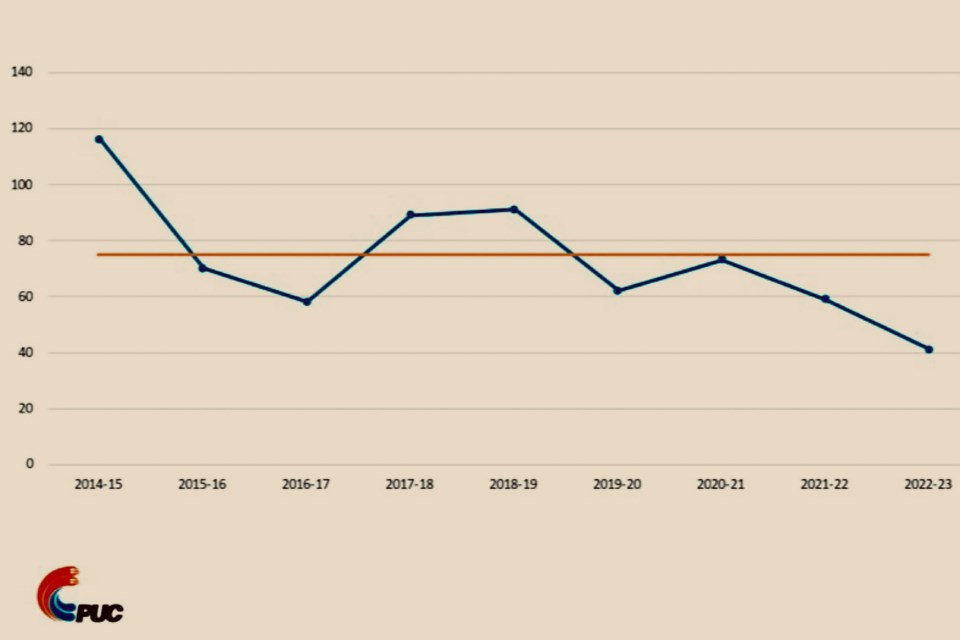Thanks in part to Canada's warmest winter on record, the Public Utilities Commission of Sault Ste. Marie is reporting water main breaks are way down.
Our water infrastructure had just 23 breaks during the 2023-24 season, compared to a five-year average of 46 and a nine-year average of 73.
"I don't think it's going to stay this low," says Brooke Suurna, director of water operations.
"I think we're bound to get a cold winter and the numbers will move up substantially based on the weather," Suurna told a commission meeting last week.
"This can be credited to a combination of favourable weather conditions and the successful delivery of annual water main replacement and rehabilitation projects within Sault Ste. Marie," Jairus Patterson, PUC communications supervisor, told SooToday.
"Our annual plan is based on a five-year rolling average," Patterson said.
"The reduction in water main breaks not only signifies enhanced service reliability but also translates to resource and cost savings.
"By minimizing the frequency of these incidents, the PUC can allocate resources more efficiently, optimizing operational expenses and ultimately benefiting the community.
"With the decrease in maintenance costs resulting from fewer water main breaks, the PUC can reinvest back into its critical capital program," Patterson said.
The points on the graph shown above represent an overlap period from Nov. 1 until Oct. 31 of the following year.
"Main break season typically starts late December and runs through into March," Suurna told commission members last Friday.
"So we're through that now. We may see a smattering of them throughout the summer and a few in the fall, but nothing substantial."
Suurna said there are two primary ways that water main breaks occur.
"In the course of the winter, it's usually shifting in the ground, and frost heave. It will shift and the pipe will have a small circumferential break in it.
"And there'll be other times where the corrosion of an older pipe, the pressure of the water will just make a pinhole leak or will blow out a small portion of the pipe," Suurna said.
And how are water main breaks repaired?
"If it's a simple circumferential break, we'll just put a repair clamp on and then we're okay there. If there is a crack in the main, then we'll cut out a section to make sure that crack doesn't expand and put a new section of pipe in."
